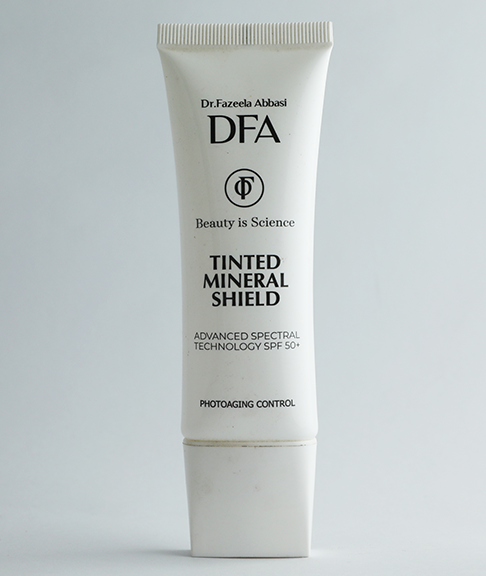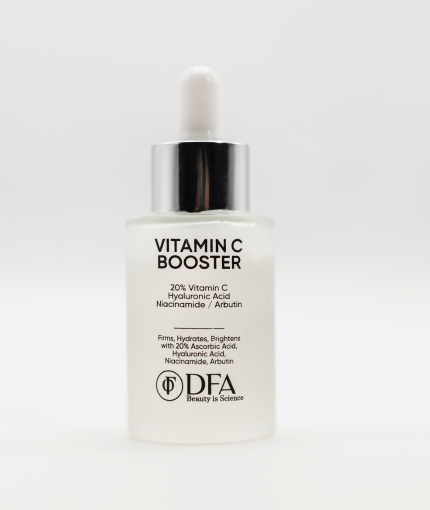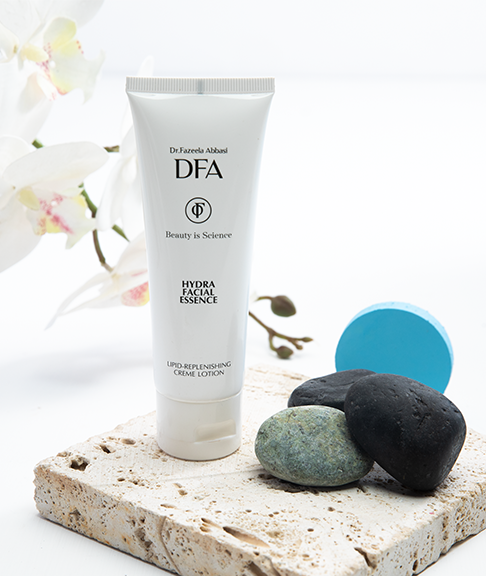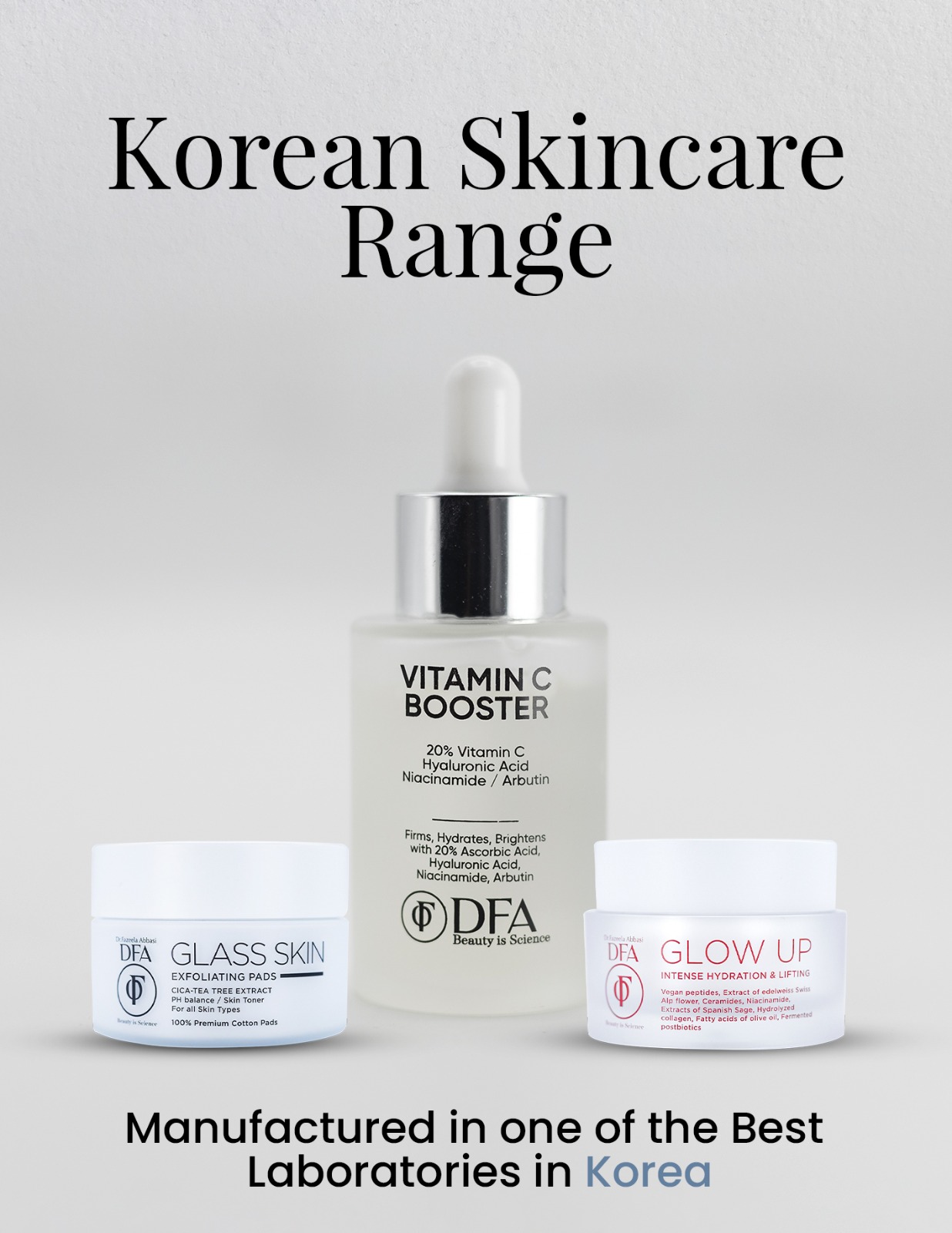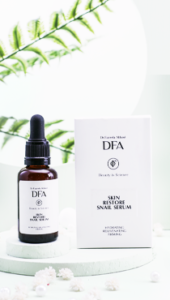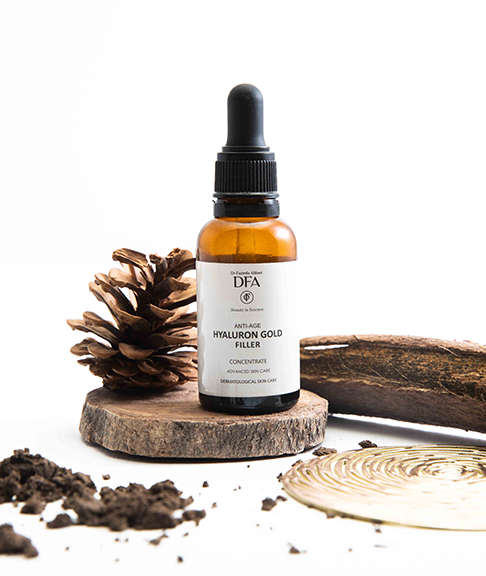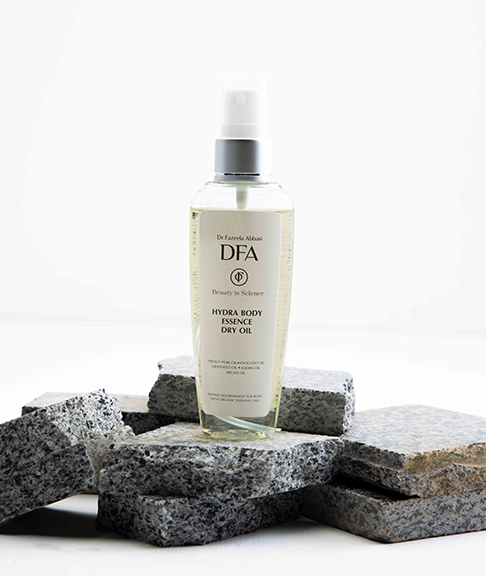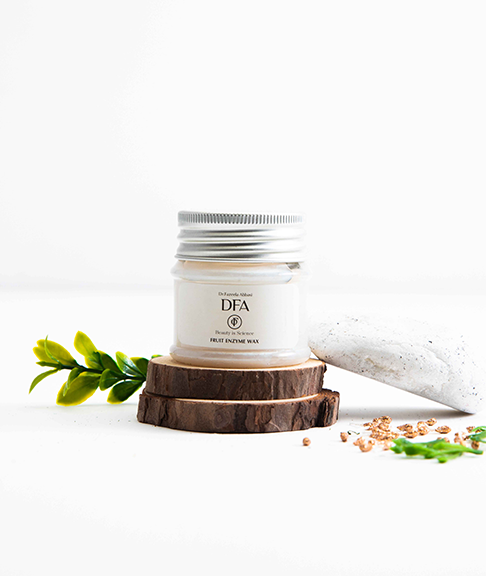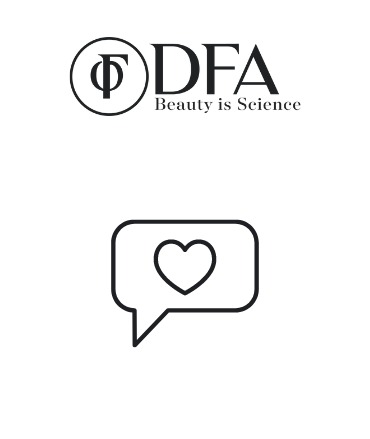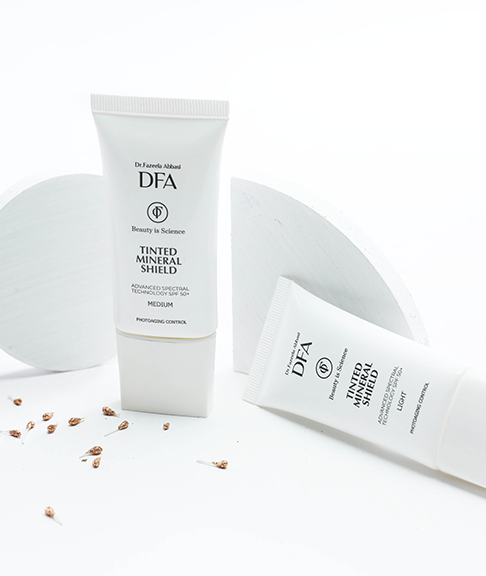Skin structure
Skin consists of three main layers – the epidermis, the dermis and the subcutis – each of which is made up of several sub-layers. Skin appendages –such as follicles and sebaceous and sweat glands – also play various roles in its overall function.
Epidermis
As the outermost layer that we see and touch, the epidermis protects us from toxins, bacteria and fluid loss. It consists of 5 sub-layers of keratinocyte cells. These cells, produced in the innermost basal layer, migrate up towards the surface of the skin. As they do, they mature and undergo a series of changes. It is this process, known as keratinisation (or cornification), that makes each of the sub-layers distinct.
- Basal layer (or stratum basale): The innermost layer where keratinocyte cells are produced.
- Prickle layer (or stratum spinosum): Keratinocytes produce keratin (protein fibres) and become spindle-shaped.
- Granular layer (stratum granulosum): Keratinisation begins – cells produce hard granules and, as they push upwards, these granules change into keratin and epidermal lipids.
- Clear layer (stratum lucidium): Cells are tightly compressed, flattened and indistinguishable from one another.
- Horny layer (or stratum corneum): The outermost layer of the epidermis with layers of dead cells. These dead cells are shed regularly in a process known as desquamation. The horny layer is also home to the sweat gland pores and the openings of the sebaceous glands.
The outermost skin layer is known as the horny layer and is where dead cells are regularly shed.
The cells in the horny layer are bound together by epidermal lipids. These lipids are essential for healthy skin: they create its protective barrier and bind in moisture. When lipids are missing, skin can become dry and may feel dry and rough.
The epidermis is covered by an emulsion of water and lipids (fats) known as the hydrolipid film. This film, maintained by secretions from the sweat and sebaceous glands, helps to keep our skin supple and acts as a further barrier against bacteria and fungi.
The water part of this film, known as the protective acid mantle contains:
- Lactic acid and various amino acids from sweat.
- Free fatty acids from sebum.
- Amino acids, pyrrolidine carboxylic acid and other natural moisturizing factors (NMF’s) which are mainly by-products of the keratinsation process.
Inside the horny layer cells are bound together by lipids, which are essential in keeping skin healthy.
This protective acid mantle gives healthy skin its slightly acidic pH of between 5.4 and 5.9. The ideal environment for:
- Skin-friendly microorganisms (known as skin flora) to thrive and harmful microorganisms to be destroyed.
- The formation of epidermal lipids.
- The enzymes that drive the process of desquamation.
- The horny layer to be able to repair itself when damaged.
Over most parts of the body, the epidermis is only about 0.1 mm in total, though it is considerably thinner on skin around the eyes (0.05mm) and considerably thicker (between 1 and 5mm) on the soles of the feet.
Dermis
The dermis is the thick, elastic but firm middle layer of the skin, made up of 2 sub-layers:
- The lower layer (or stratum reticulare)
- The upper layer (or stratum papillare)
The main structural components of the dermis are collagen and elastin, connective tissues, which give strength and flexibility and are the vital components of healthy, young-looking skin. These fibers are embedded in a gel-like substance (containing hyaluronic acid), which has a high capacity for water-binding and helps to maintain the volume of our skin.
Lifestyle and external factors such as the sun and changes in temperature have an impact of collagen and elastin levels and on the structure of the surrounding substance. As we age, our natural production of collagen and elastin slows down and the skin’s ability to bind in water decreases. Skin looks less toned and wrinkles appear.
The dermis plays a key role in protecting the body from external influences and irritants as well as feeding the outermost layers of skin from within:
- Its thick, firm texture helps to cushion external blows and, when damage occurs, it contains connective tissues such as fibroblasts and mast cells that heal wounds.
- It is rich in blood vessels that nourish the epidermis while removing waste.
- The sebaceous glands (which deliver sebum or oil to the surface of the skin) and the sweat glands (which deliver water and lactic acid to the surface of the skin) are both located in the dermis. These fluids combine together to make up the hydrolipid film.
The dermis is also home to:
- Lymph vessels.
- Sensory receptors.
- Hair roots: the bulbous end of the hair shaft where hair is developed
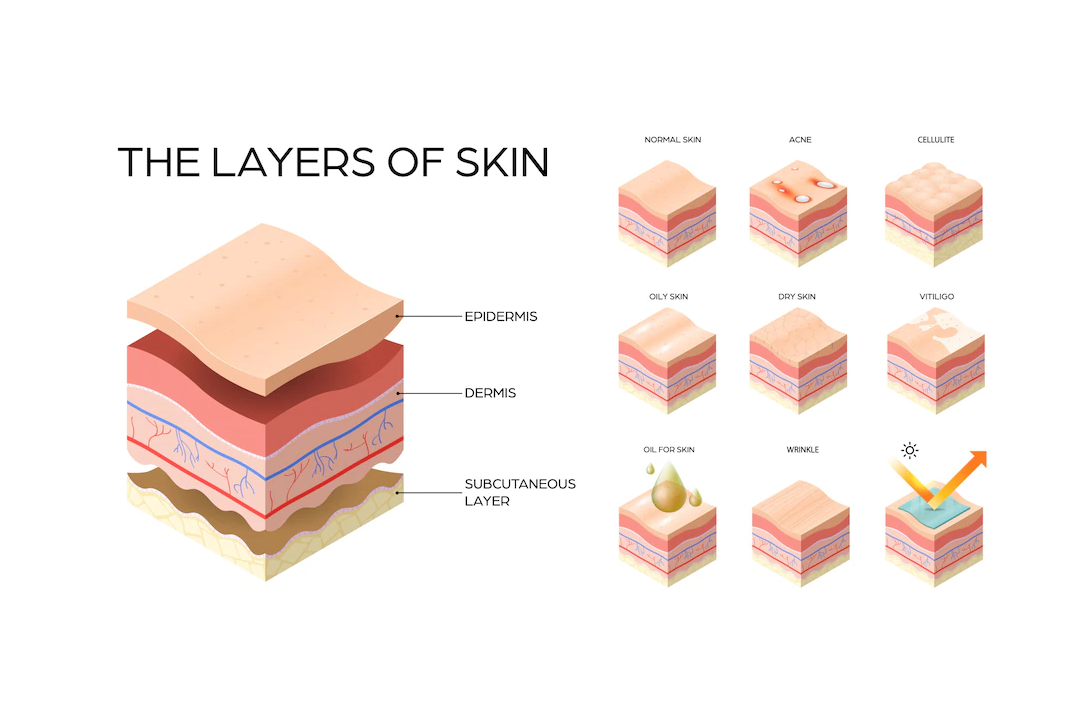
The dermis protects the body with its cushioning, its ability to nourish and remove waste as well as its ability to sweat.
Subcutis (or hypodermis)
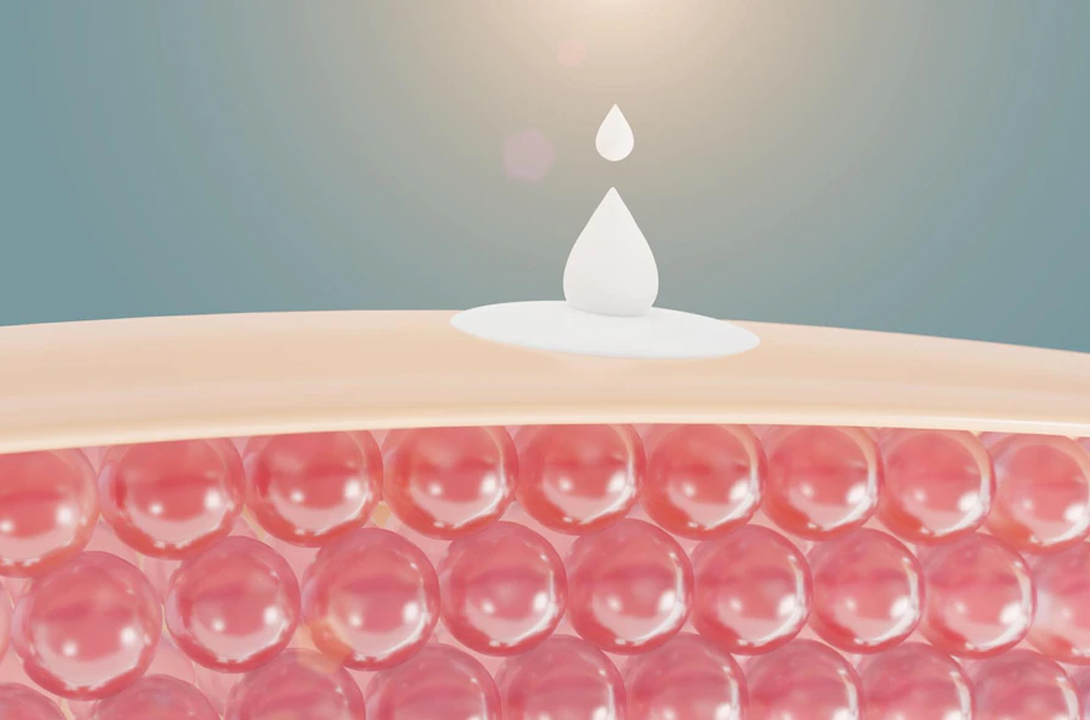
The subcutis pads insulate the body and is home to fat cells, collagen fibres and blood vessels.
The innermost layer of our skin stores energy while padding and insulating the body. It is mainly composed of:
- Fat cells (adipocytes): clumped together in cushion-like groups.
- Special collagen fibres (called tissue septa): loose and spongy connective tissues that hold the fat cells together.
- Blood vessels .
What is skin pH?
Skin is the ultimate multi-tasker, performing several essential roles for our overall wellbeing.
The most important role it plays is as a protective barrier between our bodies and the outside world, and skin’s pH is one of its key protective mechanisms. The pH of our skin is constantly challenged by external aggressors such as pollution, temperature changes and harsh chemicals and internal factors like hormones and levels of basic vitamins and minerals and electrolytes. Superior skincare products help to maintain skin’s optimal pH and support and restore its natural defenses. This makes it more resilient, less sensitive and better able to carry out its vital work of protecting us.
What is skin’s pH?
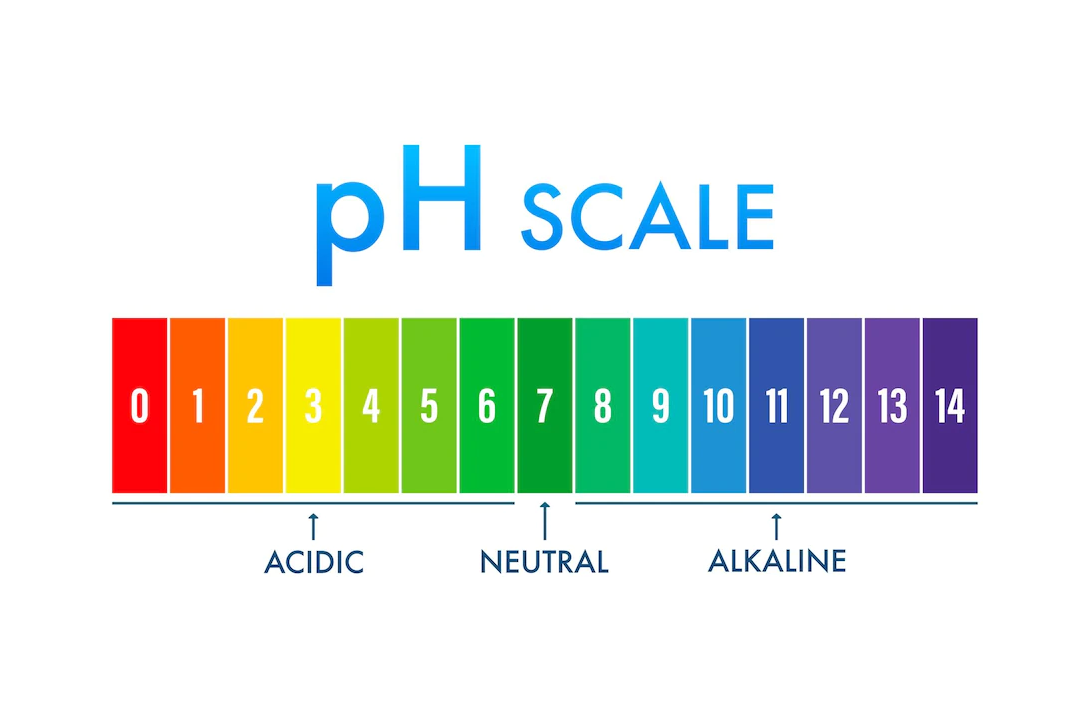
The optimal pH value of skin on most of our face and body lies between 4.7 and 5.75. A pH of 7 (that of pure water) is considered neutral. Anything below that is acidic and above it alkaline, so skin’s natural pH is mildly acidic. This mildly acidic pH is created by skin’s acid mantle, the water part of the hydrolipid film that protects the external layers of skin.
Skin’s pH varies slightly according to both gender and where it is on the body. It also fluctuates at different life stages.
Why does skin’s pH matter?
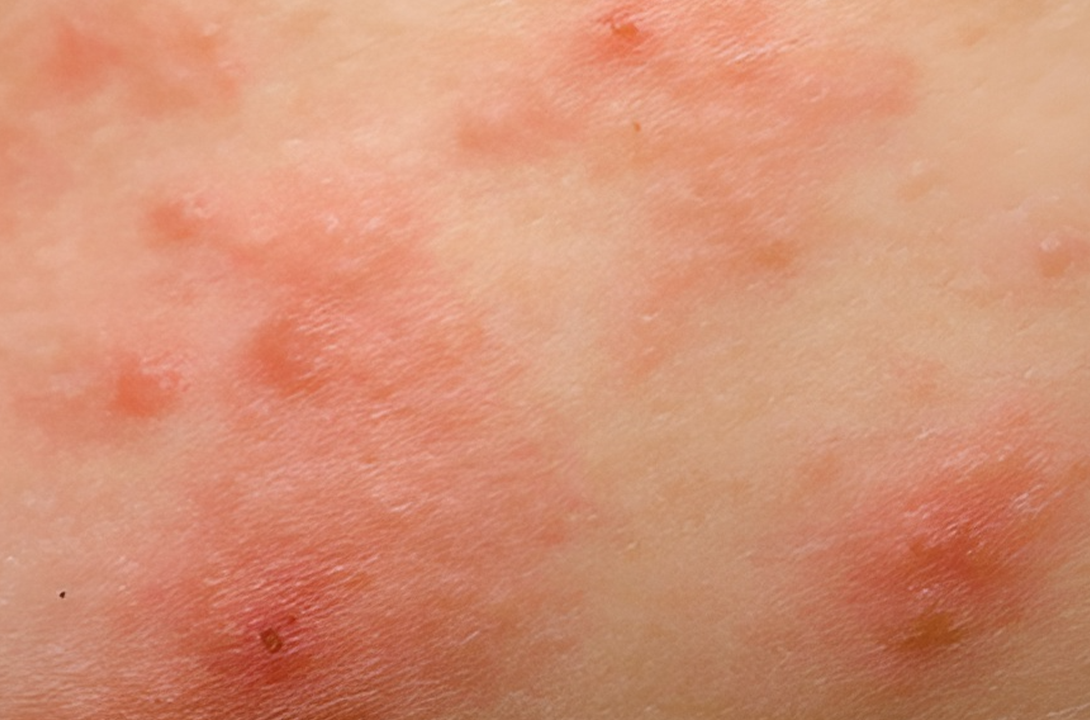
When skin‘s pH is compromised, it is prone to infection and inflammation.
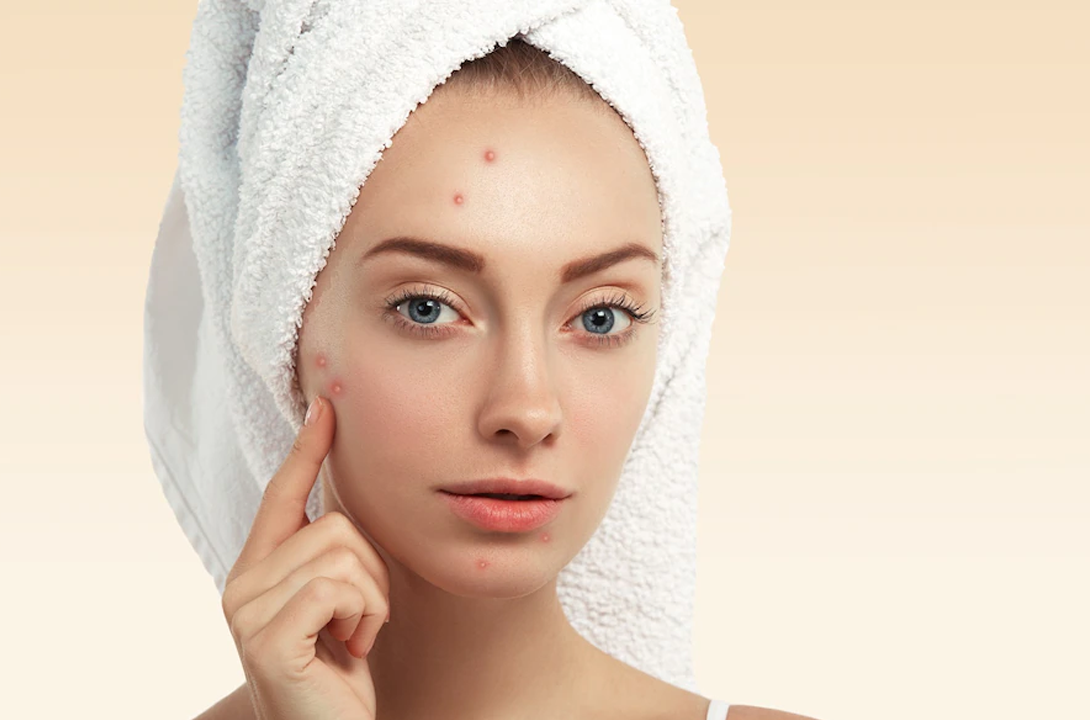
The acid mantle helps to keep skin healthy.
Skin’s pH plays an important role in skin condition. The acid mantle is key to skin’s protective barrier. It neutralises alkaline-based aggressors (such as harsh surfactants), inhibits the growth of bacteria and restores and maintains the optimal acid environment in which skin’s natural flora can thrive.
If skin’s pH rises into the alkaline range, its natural balance is disturbed. Essential epidermal lipids cannot be synthesised and skin loses water and dries out. In this condition, the outer layer of skin (or epidermis) is no longer able to work as a protective barrier.
When skin’s barrier function is compromised it is less resilient and more sensitive to environmental triggers. It can become dry, sensitive or hypersensitive, and is susceptible to infections, diseases such as Atopic Dermatitis and conditions such as Rosacea and Acne.
What can affect skin’s pH?
There are many external and internal factors that may have an impact on skin’s pH. Skin’s location on the body can also affect its pH and certain skin conditions, such as Atopic Dermatitis, alter the pH of skin.
External factors
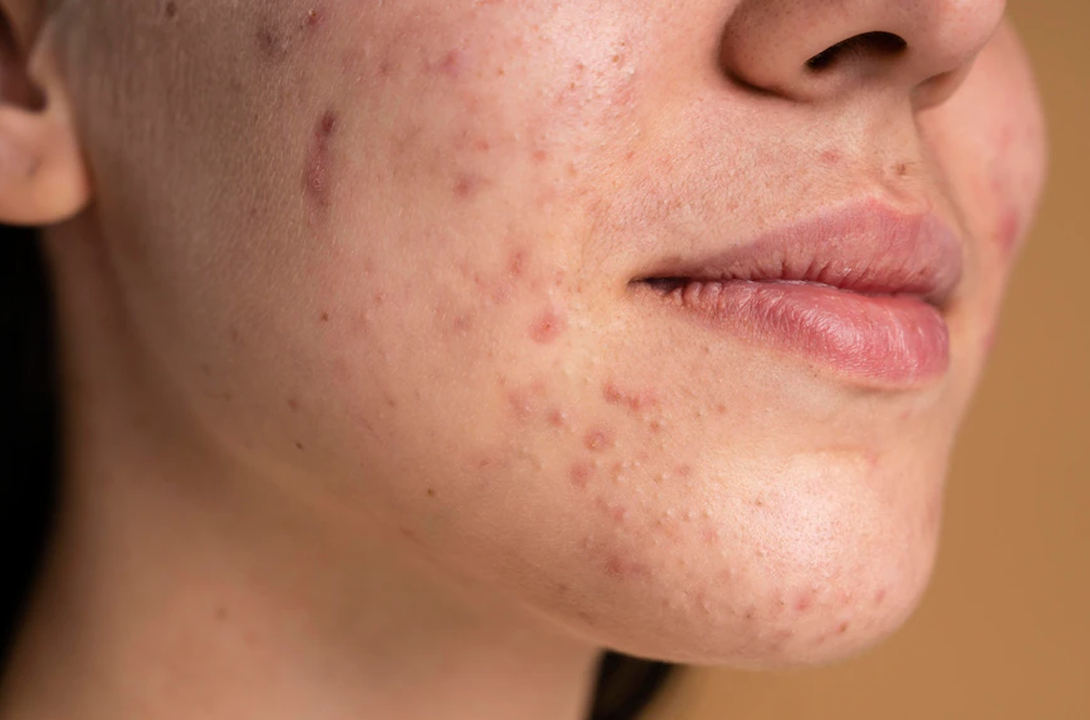
Harsh chemicals affect skin‘s naturalpH.
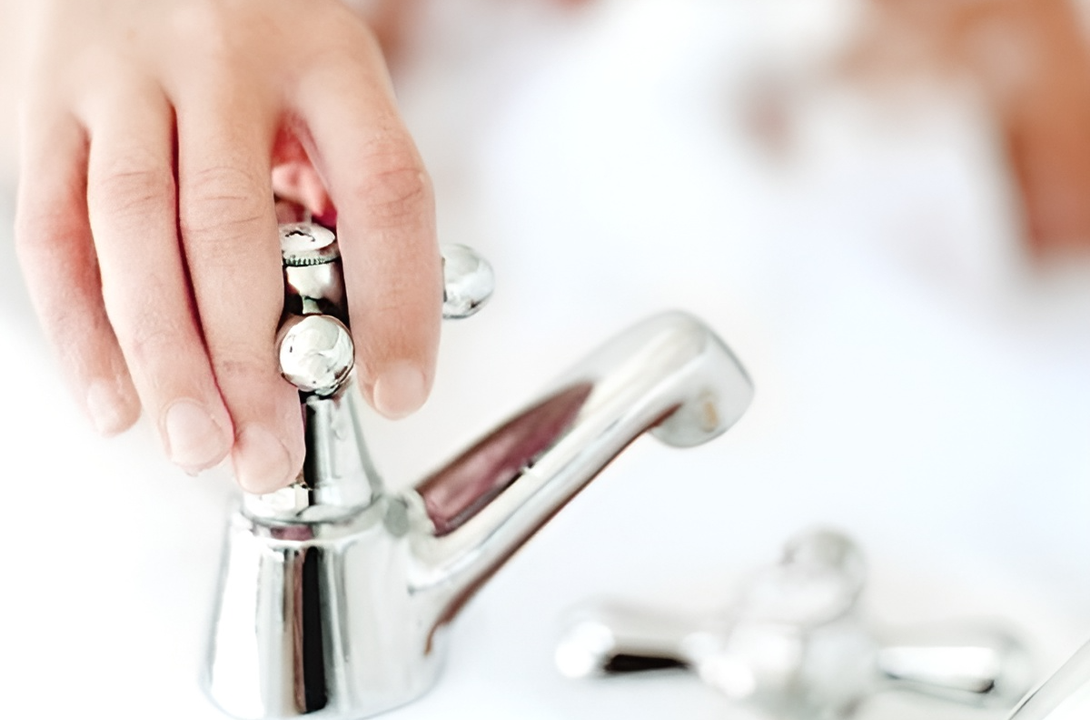
Frequent washing, in water that is too hot, can stress skin.
The external factors that stress skin include:
- Changes in temperature and humidity
- Water used in a specific environment
- Dirt and pollution
- Washing too frequently
- Alkaline cosmetics and skincare products
- Chemicals with alkaline pH
- Drugs like diuretics and antibiotics
- Medical procedures like chemotherapy and dialysis
These factors overtax skin’s natural neutralising capability, damage cell structure and impair the skin’s protective barrier.
Internal factors
Our genetics, biological age and hormones can also affect skin’s pH.
The protective acid mantle takes time to form, so newborn babies have particularly sensitive skin.
During the first few weeks of life, a baby’s skin has a higher pH of between 6.5 and 5.5 as its protective acid mantle is not yet fully formed. As hormones change later in life (for example during puberty, pregnancy and the menopause), the pH of skin can also change.
We can help to support skin’s optimum pH with healthy lifestyle choices, a regular skincare routine and by using products that respect skin’s natural pH and maintain its protective barrier. It is also advisable to treat certain areas of the body (such as the hands, armpits and intimate area) with products that are formulated to respect their natural pH.
The DFA noble pH range– which includes body lotions, creams and cleansers – has been specially formulated to restores skin’s natural defenses and make it more resilient and less sensitive. The unique pH Balance System with Citrate Buffer helps to restore skin’s optimal pH. In the cleansers, it combines with extra mild surfactants to prevent skin from drying out. In the care products, it combines with ceramides and physiological lips, known for its regenerative properties, to restore skin’s natural pH, make it more resilient and less sensitive, and support long-lasting moisturisation.
All products in the range are clinically and dermatologically proven to be ideal for daily use on dry sensitive and allergy-prone skin.
What happens when skin is damaged?
Healthy, problem-free skin is even in colour, smooth in texture, well hydrated and appropriately sensitive to touch, pressure and temperature. When skin’s natural barrier is disturbed, its protective function and healthy appearance are compromised:
- It loses moisture and elasticity and can look and feel dry, rough, cracked and/or saggy.
- It becomes increasingly sensitive to external influences (such as sun and temperature changes) and is particularly prone to infection.
Infected skin can become inflamed as inflammatory immune cells move in to try and repair the damaged barrier and heal the infection. In the case of conditions such as Atopic Dermatitis and an itchy scalp, specialist treatment is often needed to break the vicious cycle of repeated itching and further infection and to help regenerate skin’s natural barrier.
Skin function
Skin is essential to our overall health and wellbeing. Healthy skin acts as a barrier between the outside world and the inside of the body and is our best and first defense against:
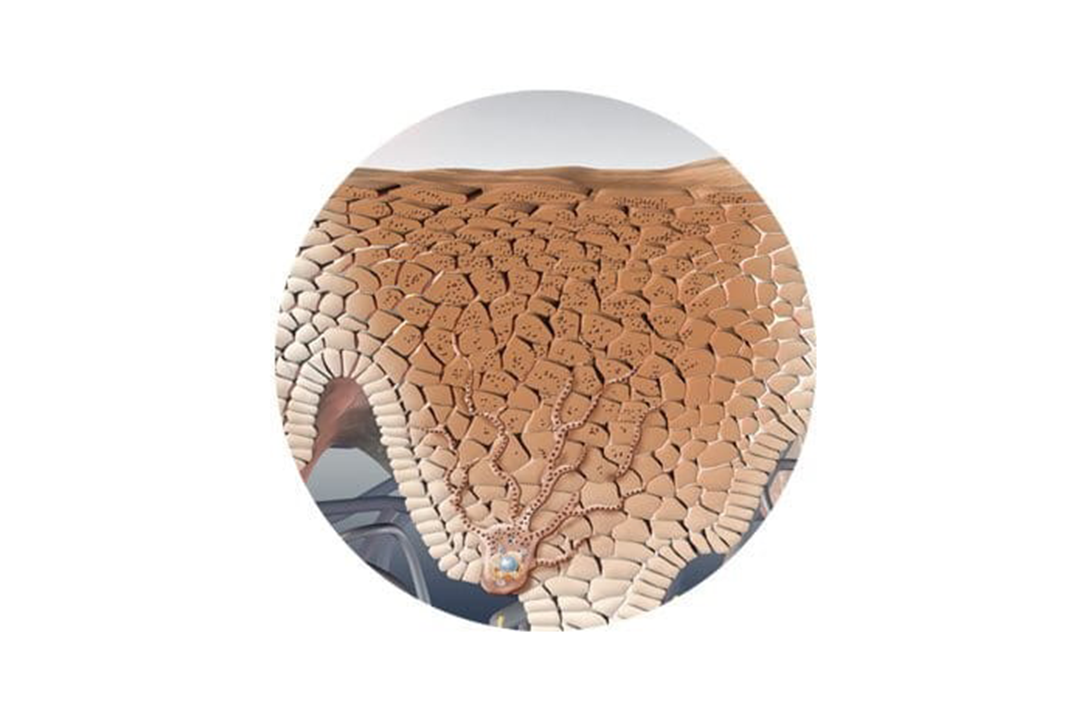
UV protection
Cold, heat, water loss and radiation: As the outermost layer of the skin, the horny layer plays a pivotal role in protecting the body from the environment and limiting the amount of water loss from the epidermis.
It contains natural moisturising factors (NMFs) – derived from sebaceous oils of the horny layer including lactic acid and urea. These bind with water and help to maintain skin’s elasticity, firmness and suppleness. If these factors are depleted, skin loses moisture. When moisture of the horny layer falls to below 8 to 10%, it becomes rough, dry and prone to cracking.
When the skin is regularly exposed to UV rays, melanin production in the basal layer increases, skin thickens to protect itself and hyperpigmentation can occur.
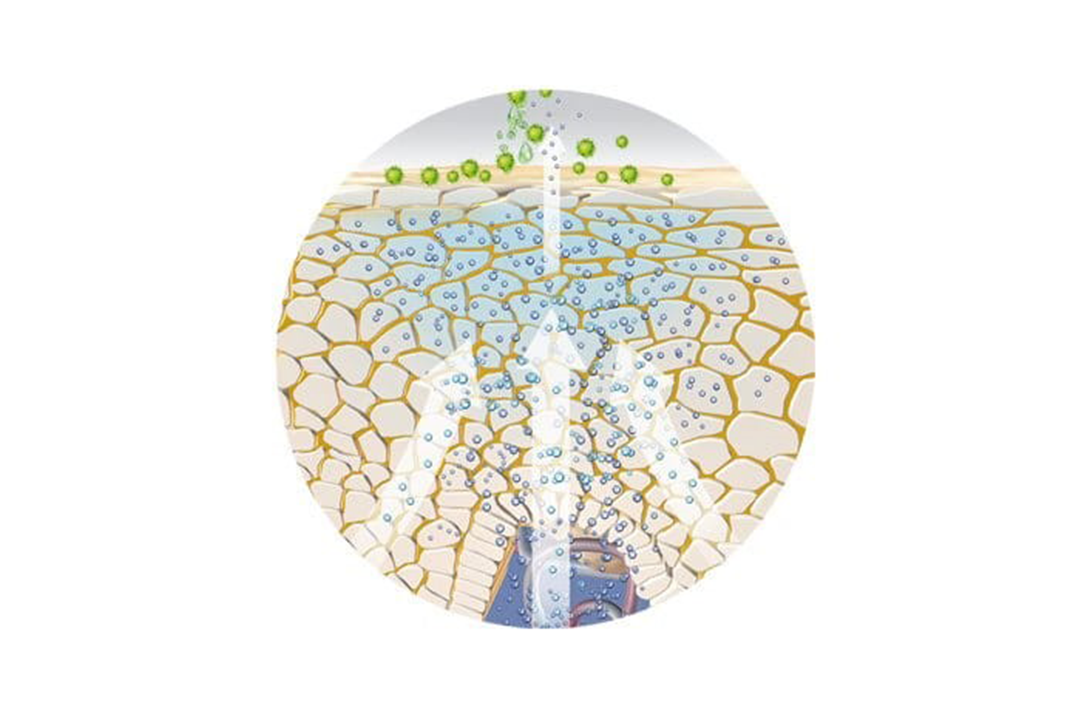
Chemical substances : The buffer capacity of the hydrolipid film and the protective acid mantle helps to protect the body from harmful alkaline based chemicals.
Bacteria and viruses : The horny layer of the epidermis and its protective acid mantle form a barrier against bacteria and fungi. If something passes this first line of defense, skin’s immune system reacts.
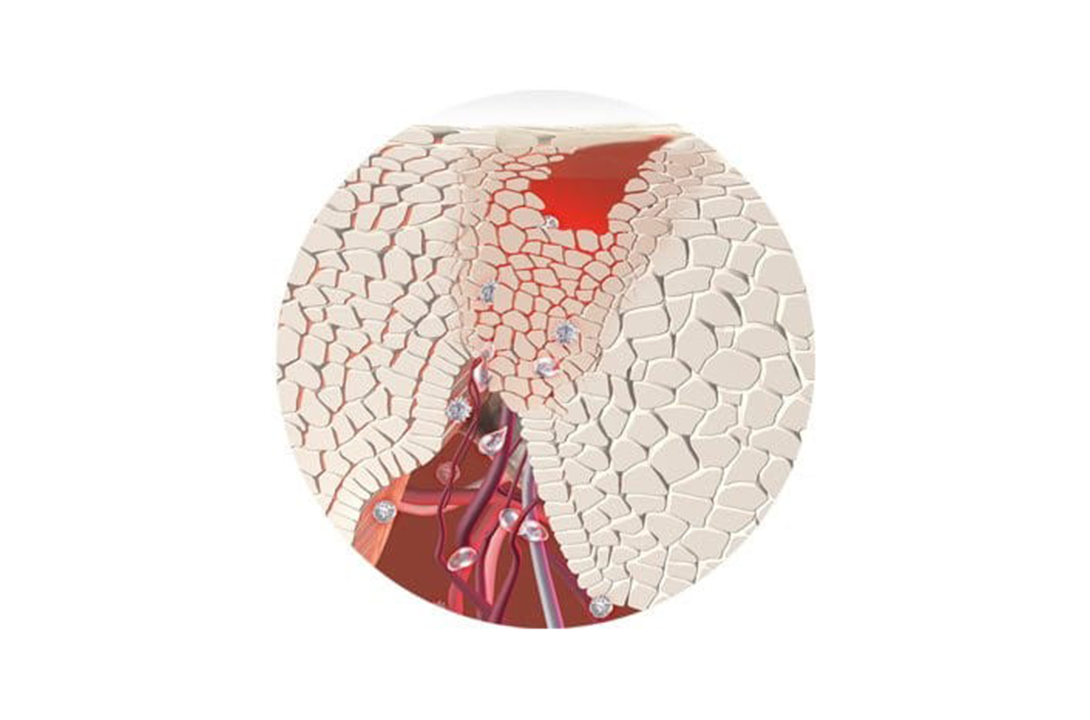
Regeneration
The ultimate multi-tasker, skin plays many other roles essential to our health and wellbeing:
Temperature regulation: Skin perspires to cool the body and contracts the vascular system in the dermis to conserve heat.
Control of sensation: Nerve endings in skin make it sensitive to pressure, vibration, touch, pain and temperature.
Regeneration: Skin is able to repair wounds.
Food source: The fat cells in the subcutis serve as important storage units for nutrients. When the body needs them, they pass into the surrounding blood vessels and are carried to where they are required.
Skin also plays an important psychological role. As the most visible indicator of health, the condition of our skin affects how we feel about ourselves and how others view us. When skin is healthy and problem-free it is able to do its job better and we feel more comfortable and confident.



